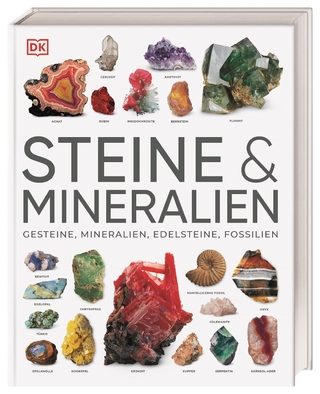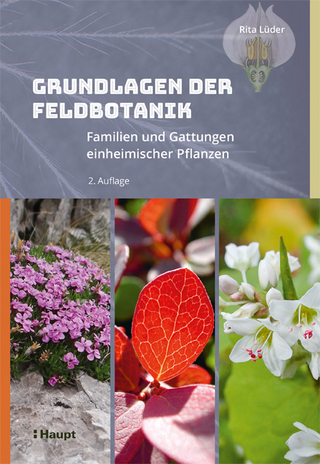
Spores of the Pteridophyta
Springer-Verlag New York Inc.
978-1-4613-8993-4 (ISBN)
Source of Material Studied The spores are largely from collections in the Harvard University Herbarium (Gray Herbarium and Arnold Arboretum), except as indicated in the cap- tions. We are grateful to the directors and curators of these and the follow- ing institutions for permission to examine specimens included in the work: Herbarium ]utlandicum, Botanical Institute, University of Aarhus, Den- mark; Queensland Regional Station, C. S. I. R. O.
1.Ophioglossaceae.- 1. Botrychium.- 2. Helminthostachys.- 3. Ophioglossum.- 2.Marattiaceae.- 4. Angiopteris.- 5. Protomarattia.- 6. Christensenia.- 7. Archangiopteris.- 8. Marattia.- 9. Danaea.- 3.Osmundaceae.- 10. Osmunda.- 11. Todea.- 12. Leptopteris.- 4.Gleicheniaceae.- 13. Gleichenia.- 14. Dicranopteris.- 15. Stromatopteris.- 5.Matoniaceae.- 16. Matonia.- 17. Phanerosorus.- 6.Cheiropleuriaceae.- 18. Cheiropleuria.- 7.Dipteridaceae.- 19. Dipteris.- 8.Hymenophyllaceae.- 20. Hymenoglossum.- 21. Serpyllopsis.- 22. Hymenophyllum.- 23. Sphaerocionium.- 24. Crepidomanes.- 25. Trichomanes.- 26. Cephalomanes.- 27. Cardiomanes.- 9.Schizaeaceae.- 28. Lygodium.- 29. Anemia.- 30. Mohria.- 31. Schizaea.- 10.Pteridaceae.- 32. Platyzoma.- 33. Ceratopteris.- 34. Pityrogramma.- 35. Anogramma.- 36. Eriosorus.- 37. Jamesonia.- 38. Pterozonium.- 39. Nephopteris.- 40. Cerosora.- 41. Afropteris.- 42. Onychium.- 43. Actiniopteris.- 44. Austrogramme.- 45. Syngramma.- 46. Taenitis.- 47. Cheilanthes.- 48. Adiantopsis.- 49. Notholaena.- 50. ?ellaea.- 51. Doryopteris.- 52. Paraceterach.- 53. Bommeria.- 54. Hemionitis.- 55. Trachypteris.- 56. Coniogramme.- 57. Cryptogramma.- 58. Llavea.- 59. Adiantum.- 60. Ochropteris.- 61. Anopteris.- 62. Pteris.- 63. Idiopteris.- 64. Neurocallis.- 65. Acrostichum.- 11.Vittariaceae.- 66. Rheopteris.- 67. Antrophyum.- 68. Anetium.- 69. Vittria.- 70. Monogramma.- 71. Hecistopteris.- 12.Loxomataceae.- 72. Loxoma.- 73. Loxsomopsis.- 13.Plagiogyriaceae.- 74. Plagiogyria.- 14.Dicksoniaceae.- 75. ?ulcita.- 76. Calochlaena.- 77. Cibotium.- 78. Cystodium.- 79. Thyrsopteris.- 80. Dicksonia.- 15.Hymenophyllopsidaceae.- 81. Hymenophyllopsis.- 16.Metaxyaceae.- 82. Metaxya.- 17.Lophosoriaceae.- 83. Lophosoria.- 18.Cyatheaceae.- 84. Sphaeropteris.- 85. Alsophila.- 86.Nephelea.- 87. Trichipteris.- 88. Cyathea.- 89. Cnemidaria.- 19.Dennstaedtiaceae.- 90. Saccoloma.- 91. Dennstaedtia.- 92. Oenotrichia.- 93. Leptolepia.- 94. Monachosorum.- 95. Microlepia.- 96. Pteridium.- 97. Paesia.- 98. Hypolepis.- 99. Blotiella.- 100. Histiopteris.- 101. Lonchitis.- 102. Odontosoria.- 103. Tapeinidium.- 104. Xyropteris.- 105. Lindsaea.- 106. Ormoloma.- 20.Polypodiaceae.- 107. Platycerium.- 108. Pyrrosia.- 109. Aglaomorpha.- 110. Drynaria.- 111. Belvisia.- 112. Drymotaenium.- 113. Lemmaphyllum.- 114. Lepisorus.- 115. Christiopteris.- 116. Colysis.- 117. Dictymia.- 118. Lecanopteris.- 119. Leptochilus.- 120. Microsomia.- 121. Neocheiropteris.- 122. Phymatosorus.- 123. Campyloneurum.- 124. Dicranoglossum.- 125. Microgramma.- 126. Neurodium.- 127. Niphidium.- 128. Pleopeltis.- 129. Polypodiopteris.- 130. Marginariopsis.- 131. Polypodium.- 132. Goniophlebium.- 133. Solanopteris.- 134. Arthromeris.- 135. Selliguea.- 136. Anarthropteris.- 137. Loxogramme.- 21.Grammitidaceae.- 138. Grammitis.- 139. Calymmodon.- 140. Acrosorus.- 141. Scleroglossum.- 142. Pleurosoriopsis.- 22.Davalliaceae.- 143. Leucostegia.- 144. Davallodes.- 145. Araiostegia.- 146. Davallia.- 147. Gymnogrammitis.- 148. Nephrolepis.- 23.Thelypteridaceae.- 149. Thelypteris.- 150. Phegopteris.- 151. Pseudophegopteris.- 152. Macrothelypteris.- 153. Cyclosorus.- 24.Dryopteridaceae.- 154. Rumohra.- 155. Acrophorus.- 156. Peranema.- 157. Stenolepia.- 158. Nothoperanema.- 159. Dryopteris.- 160. Arachniodes.- 161. Lithostegia.- 162. Maxonia.- 163. Polystichum.- 164. Cyrtomium.- 165. Didymochlaena.- 166. Stigmatopteris.- 167. Cyclodium.- 168. Polybotrya.- 169. Tectaria.- 170. Heterogonium.- 171. Pleocnemia.- 172. Hypoderris.- 173. Psomiocarpa.- 174. Triplophyllum.- 175. Ctenitis.- 176. Megalastrum.-177. Aenigmopteris.- 178. Dryopsis.- 179. Lastreopsis.- 180. Dryopolystichum.- 181. Pteridrys.- 182. Cyclopeltis.- 183. Adenoderris.- 184. Athyrium.- 185. Diplazium.- 186. Hemidictyum.- 187. Deparia.- 188. Cornopteris.- 189. Cystopteris.- 190. Gymnocarpium.- 191. Hypodematium.- 192. Woodsia.- 193. Onocleopsis.- 194. Matteuccia.- 195. Onoclea.- 25.Oleandraceae.- 196. Oleandra.- 197. Arthropteris.- 26.Lomariopsidaceae.- 198. Lomariopsis.- 199. Teratophyllum.- 200. Lomagramma.- 201. Bolbitis.- 202. Elaphoglossum.- 27.Blechnaceae.- 203. Woodwardia.- 204. Pteridoblechnum.- 205. Steenisioblechnum.- 206. Doodia.- 207. Blechnum.- 208. Salpichlaena.- 209. Sadleria.- 210. Brainea.- 211. Stenochlaena.- 28.Aspleniaceae.- 212. Asplenium.- 213. Camptosorus.- 214. Ceterach.- 215. Schaffneria.- 216. Pleurosorus.- 217. Holodictyum.- 218. Diellia.- 29.Psilotaceae.- 219. Tmesipteris.- 220. Psilotum.- 30.Marsileaceae.- 221. Marsilea.- 222. Regnellidium.- 223. Pilularia.- 31.Salviniaceae.- 224. Salvinia.- 225. Azolla.- 32.Equisetaceae.- 226. Equisetum.- 33.Lycopodiaceae.- 227. Huperzia.- 228. Phylloglossum.- 229. Lycopodium.- 230. Lycopodiella.- 34.Selaginellaceae.- 231. Selaginella.- 35.Isoetaceae.- 232. Isoetes.- Terminology.
| Zusatzinfo | XI, 648 p. |
|---|---|
| Verlagsort | New York, NY |
| Sprache | englisch |
| Maße | 210 x 280 mm |
| Themenwelt | Sachbuch/Ratgeber ► Natur / Technik ► Natur / Ökologie |
| Naturwissenschaften ► Biologie ► Botanik | |
| Naturwissenschaften ► Biologie ► Genetik / Molekularbiologie | |
| Naturwissenschaften ► Biologie ► Mikrobiologie / Immunologie | |
| Naturwissenschaften ► Biologie ► Zellbiologie | |
| Naturwissenschaften ► Geowissenschaften ► Geologie | |
| ISBN-10 | 1-4613-8993-3 / 1461389933 |
| ISBN-13 | 978-1-4613-8993-4 / 9781461389934 |
| Zustand | Neuware |
| Haben Sie eine Frage zum Produkt? |
aus dem Bereich


